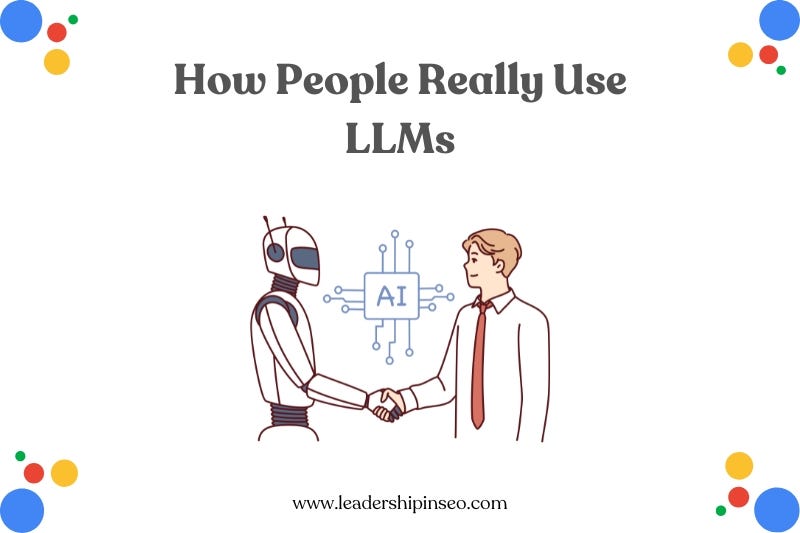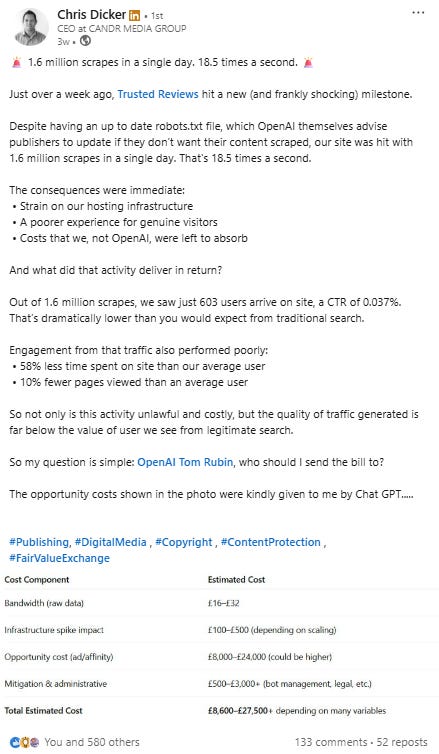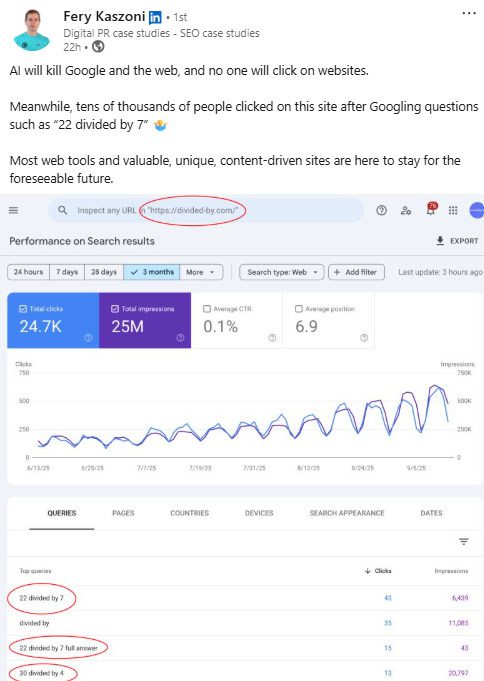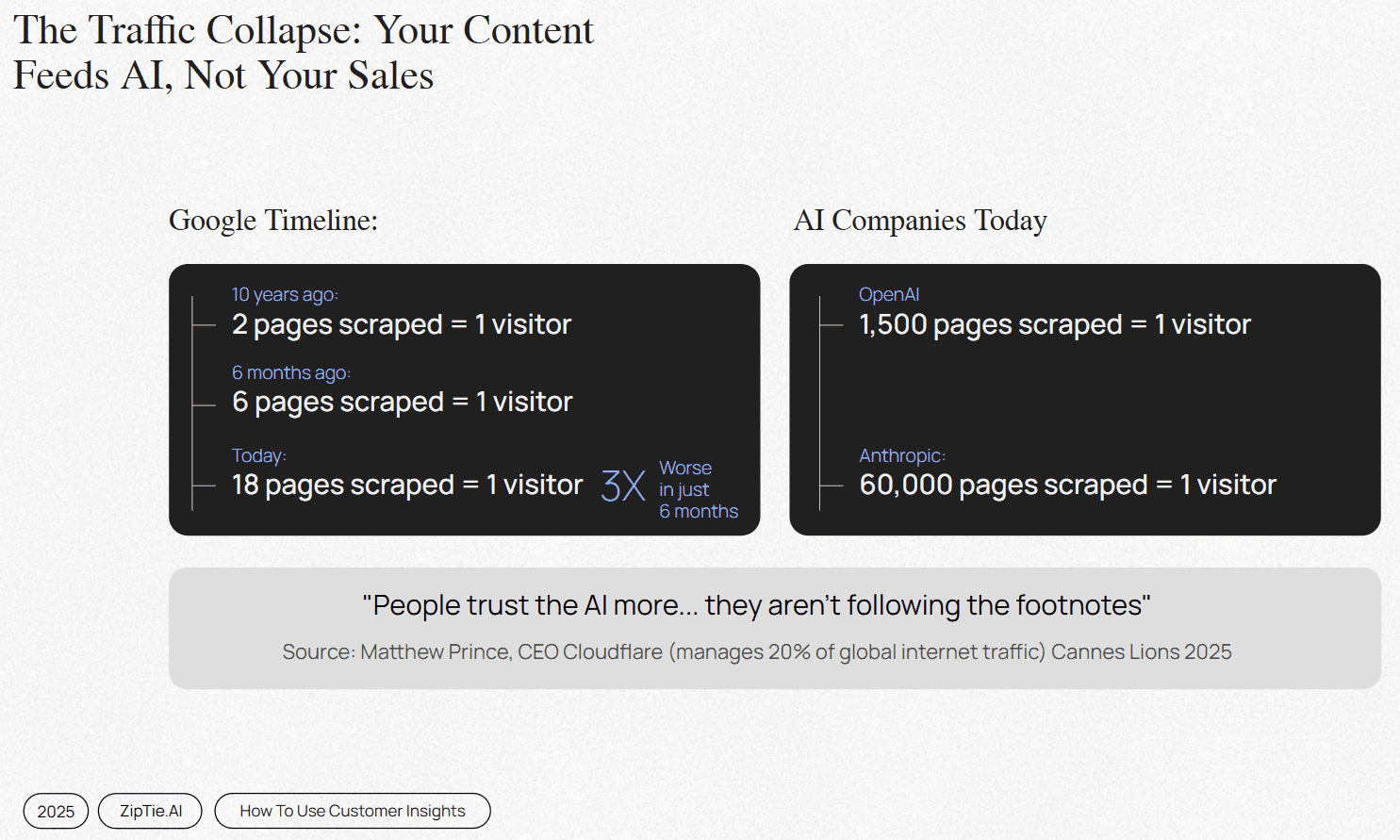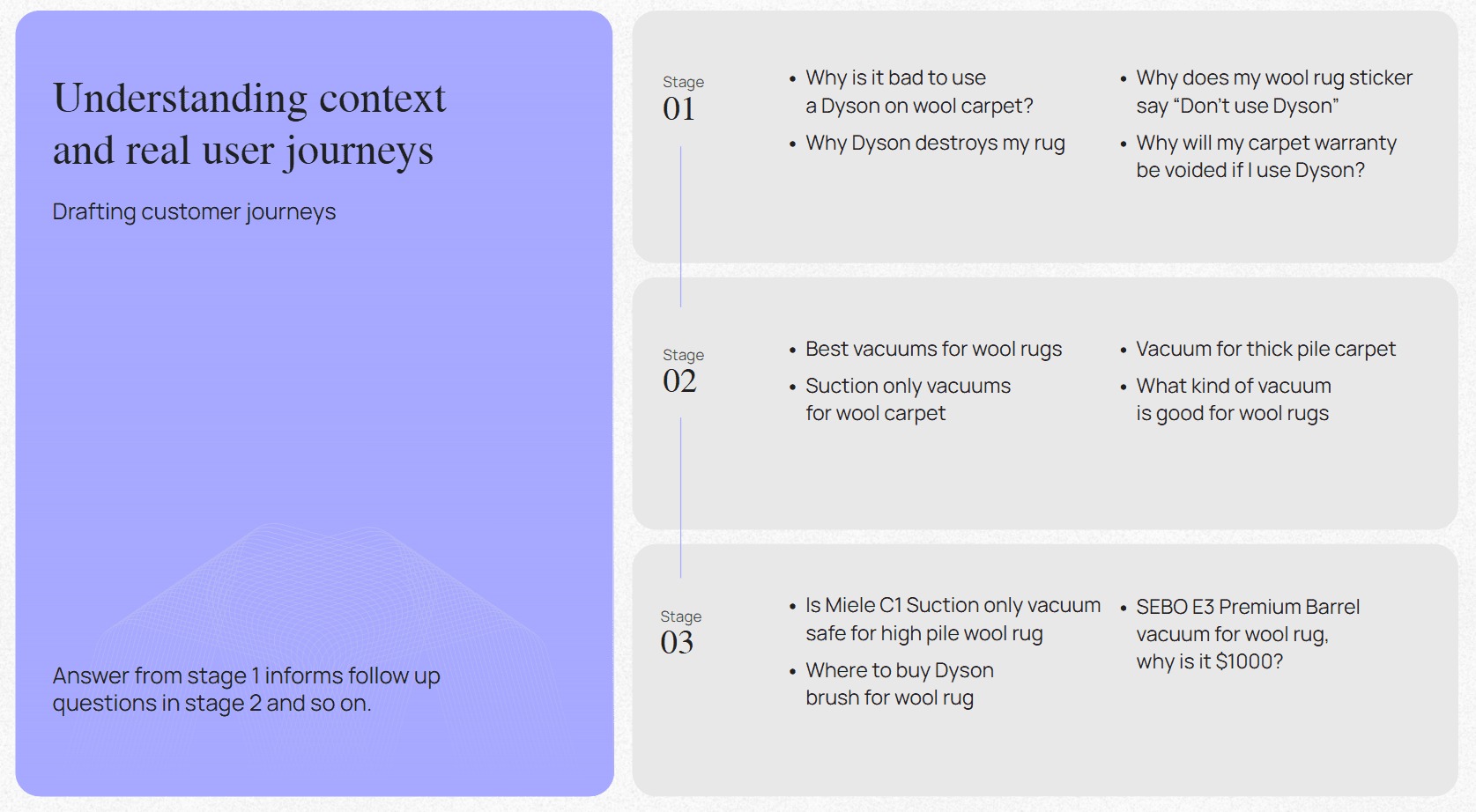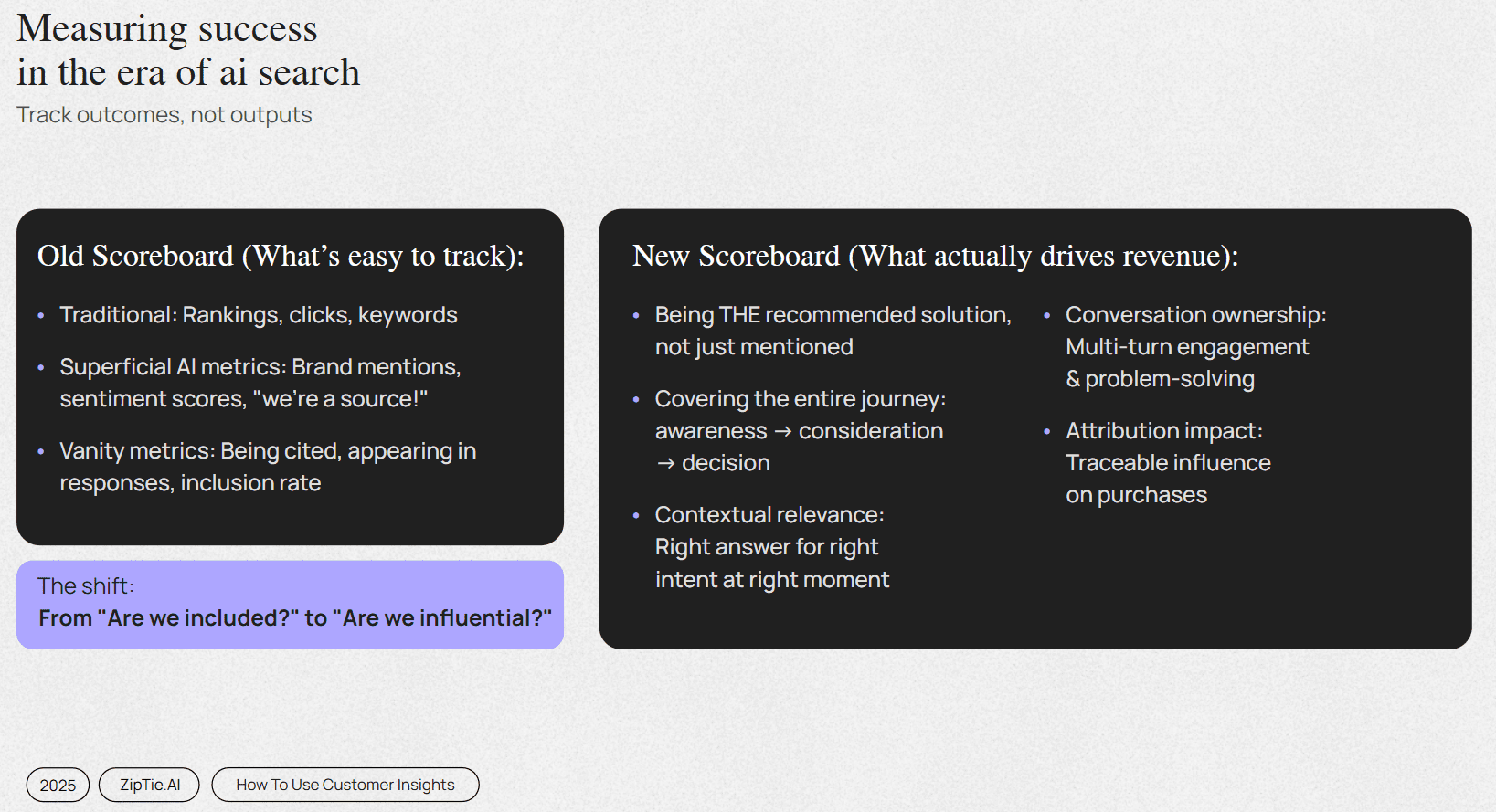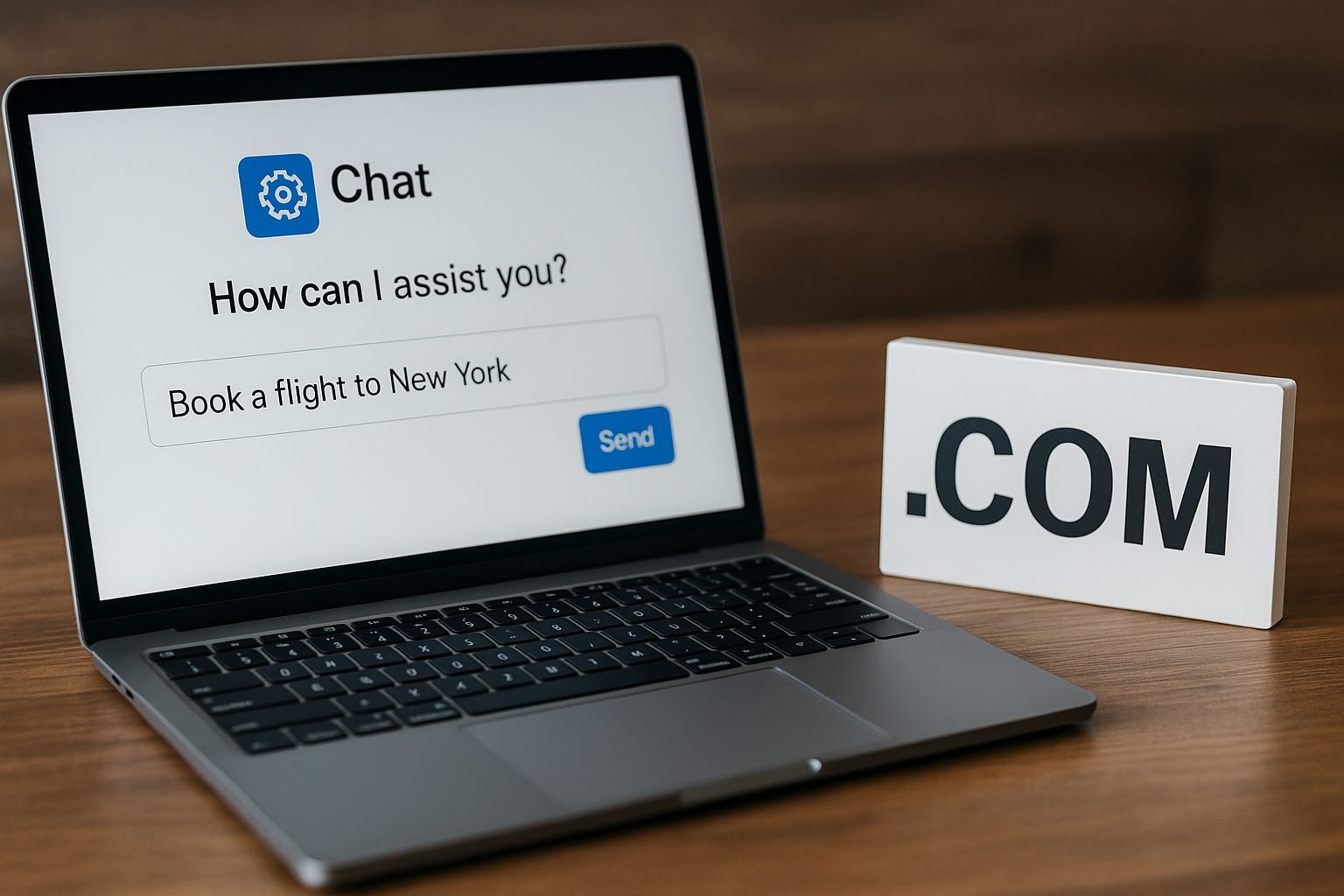How AI Is Redefining Search And What Leaders Must Do Now via @sejournal, @TaylorDanRW

Artificial intelligence is transforming how people search, discover, and act on information. For chief marketing officers and senior leaders, this is not a question of whether SEO is “dead” but of how to adapt to a new era where visibility spans AI-driven assistants, multimodal tools, and fragmented user journeys.
Two forces drive this disruption: rapid advances in technology and the accelerating adoption of new search behaviors by younger demographics.
As these forces converge, traditional measures of success such as rankings, traffic, and clicks are losing relevance.
What matters now is the ability to understand where visibility is shifting, how decisions are being shaped earlier in the funnel, and how to build adaptive strategies that secure brand presence across an expanding digital ecosystem.
The Disruption At Hand
The launch of ChatGPT marked a tipping point for digital marketing. Within months, generative AI became a mainstream tool, offering users new ways to answer questions, evaluate products, and plan decisions.
Industry debate has since centered on labels such as SEO, GEO (Generative Engine Optimization), and AIEO. But the label is secondary, the disruption is structural.
Gartner predicts that traditional search engine volumes will fall by roughly 25% as users increasingly turn to AI-powered platforms and assistants. While a 25% decline in a base as large as Google’s is still measured in trillions of searches, the shift is enough to destabilize established traffic models.
This does not spell the end of SEO. Instead, it signals a transformation of the internet itself. The way users seek and consume information is changing at the same pace as the technologies that enable it.
Why Visibility Is Changing Shape
Technology Drivers
Search is no longer confined to a search box. Google has introduced Circle to Search, Lens, AI Overviews and AI Mode. Perplexity and ChatGPT are establishing themselves as discovery platforms. Each of these represents a new entry point for user journeys, many of which bypass the traditional search results page altogether.
User Drivers
Younger demographics are accelerating the shift. At Google’s Search Central Live event in Bangkok, new data showed that Gen Z is not abandoning Google entirely in favor of TikTok or other alternatives, as commonly assumed. Instead, they are adopting AI-enabled features inside Google at a higher rate than any other age group. 1 in 10 Gen Z searches already begins with Circle or Lens, and one in five of those searches are commercial in nature.
The implication is clear: The next generation of consumers is interacting with the internet in ways that blend image recognition, voice, video, and AI assistance. Traditional keyword-driven search journeys are being replaced by multimodal, non-linear exploration.
The New Buyer Journey Dark Funnel
For years, marketers described the “funnel” as a linear path: awareness, consideration, decision. Today, that funnel is breaking apart.
AI intermediaries such as ChatGPT, Perplexity, or Google’s AI Overviews are now summarizing, curating, and interpreting information before users ever reach a brand-owned website. In many cases, research and decision-making occur entirely within these intermediaries.
At the same time, peer-generated content plays an outsized role. Reddit threads, product comparison lists, and third-party case studies are being pulled into AI-generated responses.
This ecosystem expands the number of sources that shape perception while reducing the likelihood that users visit a brand directly.
The result is a “dark funnel.” Purchase decisions are being made through fragmented, often opaque pathways that evade traditional tracking tools. For leaders, this means brand influence must extend beyond owned assets to encompass the broader ecosystem where AI models source their information.
Rethinking Organic Success Metrics
For nearly two decades, SEO success was measured through a narrow set of metrics such as keyword rankings, organic traffic, and click-through rates. In the AI-driven search environment, those measures are no longer sufficient.
Three shifts stand out:
- Cross-Channel Lift: SEO is often the first point of exposure, even if it does not capture the last click. Google Analytics 4 now makes it possible to measure this by analyzing how many users first encounter a brand through organic search before returning directly, via social, or through paid channels. This reframes SEO as a driver of brand lift across the marketing mix.
- Visibility In AI-Generated Citations: Being referenced in AI summaries does not always translate into immediate clicks, but it does influence perception and consideration. Success must account for brand presence within these outputs, even when user journeys bypass the website.
- Topic-Level Visibility: AI search retrieves information at a thematic level rather than matching individual keywords. Tracking topic visibility, breadth of coverage, and the quality of source material is becoming more valuable than measuring a single keyword position.
Traditional measures such as “average position” in Google Search Console are increasingly unreliable. AI citations are often recorded as position one, regardless of context, creating a distorted picture of performance.
Strategic Imperatives For Leaders
The changes unfolding in AI-driven search are structural, not cyclical. Leaders cannot treat them as temporary turbulence. Instead, the task is to create resilience and adaptability in marketing organizations by pursuing five imperatives:
1. Audit AI-Driven Traffic And Visibility
Leaders must first establish a baseline of how AI is already affecting their businesses. While AI referrals are still a small share of overall traffic, they represent an emerging channel with unique characteristics.
- Practical Step: Use GA4 or Looker Studio to segment traffic from platforms such as ChatGPT, Gemini, and Copilot. These sources typically appear under “referral” in analytics, but regex filters can separate them cleanly.
- Why It Matters: Treating AI traffic as a distinct channel allows organizations to analyze landing pages, conversions, and revenue, rather than dismissing it as “miscellaneous.”
- Leadership Lens: Framing AI traffic as a channel elevates its importance in boardroom discussions and positions the organization to justify future investments in tooling, content, or partnerships.
2. Track The Market, Not Just Internal Performance
A common misinterpretation is to view every decline in traffic as a failure of execution. In reality, shrinking demand in traditional search is often the root cause.
- Practical Step: Compare organic and paid impressions for the same set of keywords. If both decline, the issue is demand-side, not execution-side. Layer this with Google Trends to visualize whether volumes are falling market-wide.
- Why It Matters: This approach reframes the narrative from “our SEO team is underperforming” to “our market is shifting.” This distinction is crucial for maintaining stakeholder confidence.
- Leadership Lens: CMOs who can separate market-driven shifts from operational gaps will have sharper conversations with the C-suite about resource allocation and risk.
3. Invest In Top-Of-Funnel Presence Across The Ecosystem
AI models increasingly draw from third-party sites, reviews, and community forums when generating responses. This widens the playing field for visibility beyond a brand’s own domain.
- Practical Step: Build a program to secure mentions in authoritative third-party contexts such as industry directories, product comparison lists, peer forums, and niche communities.
- Why It Matters: Being present in these external ecosystems ensures that when AI models summarize options, your brand is more likely to appear in the conversation even if the user never reaches your website.
- Example: For a travel brand, this might mean appearing not only in “best hotel” lists on major sites, but also in Reddit threads, YouTube reviews, and AI-cited blogs.
- Leadership Lens: Leaders must expand their definition of SEO from domain optimization to ecosystem visibility. This is not an incremental task but a fundamental shift in scope.
4. Rethink The Funnel And Customer Journey
The traditional linear funnel is breaking apart. Users now move through fragmented journeys that blend passive discovery (social, video, peer reviews) with AI-assisted evaluation.
- Practical Step: Map how AI intermediaries are reshaping specific stages of your funnel. Identify which queries are being absorbed into AI summaries and where direct interaction with your brand is reduced.
- Why It Matters: In some cases, entire query categories may be “lost” to AI intermediaries. Recognizing these blind spots early allows marketers to find alternative pathways such as social amplification, partnerships, or paid distribution.
- Example: A B2B software vendor may find that “best CRM for mid-size companies” is increasingly answered by AI summaries citing analyst reports and third-party reviews. To remain visible, the vendor must prioritize those external references rather than relying solely on owned content.
- Leadership Lens: CMOs must lead organizations to think less about protecting a single funnel and more about orchestrating presence across a patchwork of fragmented pathways.
5. Measure Indirect Value And Cross-Channel Lift
SEO has always influenced channels beyond the last click, but AI disruption makes quantifying that influence more important than ever.
- Practical Step: Use GA4’s Explore feature to track first-touch organic sessions that later convert through direct, social, or paid channels. Create custom segments that isolate cross-channel lift.
- Why It Matters: This evidence shows how SEO fuels the broader marketing mix, even if conversions are attributed elsewhere. It strengthens the business case for continued investment in visibility.
- Example: A retailer may find that 40% of “direct” purchases were first initiated by an organic search session weeks earlier. Without quantifying this, the value of SEO would be understated.
- Leadership Lens: Demonstrating indirect value reframes SEO from a cost center to a growth driver, positioning CMOs to argue for resources with greater authority.
Closing Note On Execution
These imperatives are not one-time actions. They are ongoing disciplines that must evolve alongside user behavior and technological change. Leaders who embed them into their operating rhythm will be better prepared to adapt strategies, justify investments, and maintain visibility in an AI-led digital economy.
The Leadership Agenda
Understand Your Risk Exposure
Your audience determines your level of risk. Organizations serving younger, consumer-facing segments are already seeing accelerated adoption of AI search tools. For B2B businesses with locked-down environments, the shift may be slower, but it is coming.
Scrutinize Vendor Claims
Acronyms proliferate in times of disruption. What matters is not whether a vendor calls their practice SEO, GEO, or another label, but whether they can demonstrate measurable strategies for sustaining visibility in AI-led ecosystems.
Be Ready To Be Agile
A 12-month static plan is no longer viable. AI search strategies must be adaptive, continuously informed by data, and responsive to new entrants and technologies.
Visibility Beyond Search Requires New Metrics
SEO is not dead. It is evolving into a broader discipline of experience visibility, where brand presence must extend across AI models, multimodal search tools, and fragmented user journeys.
For leaders, the challenge is not to hold onto the old metrics or frameworks, but to recognize how the internet is reshaping itself and to understand we’re starting to tread new ground, and with new ground comes uncertainty and risk.
Those who measure differently, broaden their presence, and align with user-driven change will not only withstand the disruption but also secure competitive advantage in the AI-led future.
More Resources:
Featured Image: SvetaZi/Shutterstock


